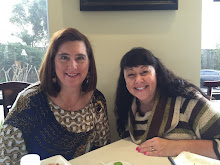I am participating in a book study conducted by our reading coach, Melanie Holtsman. We are reading and discussing the book Falling in Love With Close Reading by Chris Lehman and Kate Roberts.
Every Thursday we gather in the media center. We discuss one chapter at a time. Melanie always has an interactive lesson for us to participate in. We usually have homework. :-)
This past week we read chapter 5, A Study of Point of View and Argument. As I read through the information I asked myself, how would this look in a second grade class? It seemed as if all the examples and student work were from middle school.
Luckily our coach anticipated my confusion. First we practiced using this lens as an adult by viewing a news broadcast and then a commercial. We identified ideas vs. techniques. Then we brainstormed ways to use this point of view lens in the primary grades. One of our other second grade teachers was way ahead of me and recognized that our next common second grade Text Talk book,
The Great Kapok Tree by Lynne Cherry, would be PERFECT!
I read this book to the class for the first time last week so the kids were already familiar with the story and it's message. We specifically looked for examples of ideas and how the author conveyed them to the reader. We also looked for techniques she used to get her point across. By the end of the lesson, Lynne Cherry had convinced all 35 of our second graders that the rain forest must be saved! We could clearly see her purpose for writing this book and the effect it had on us as readers.




